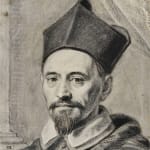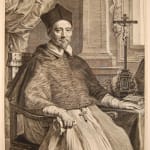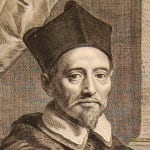
Cornelis Visscher
Portrait of Philippus Rovenius
engraving and etching; first state of two
British Museum, inv. no. 1839,0413.295.

Cornelis Visscher
Portrait of Philippus Rovenius (detail)
engraving and etching; first state of two
British Museum, inv. no. 1839,0413.295.
Cornelis Visscher (Haarlem 1628/29 - 1658 Amsterdam)
Further images
Fascinatingly, our drawing belonged to one of the most important seventeenth-century collectors of drawings, Prosper Henry Lankrink. A painter and art dealer himself, he amassed an impressive collection of works on paper, including many a sheet by van Dyck and Rubens. His collection was dispersed in two sales, held respectively in May 1693 and February 1694. The fact that our sheet, too, belonged to Lankrink speaks of its quality, which was evidently already appreciated early on.
Provenance
Prosper Henry Lankrink (1628-1692) (Lugt 2090);
Private collection, Brussels.



